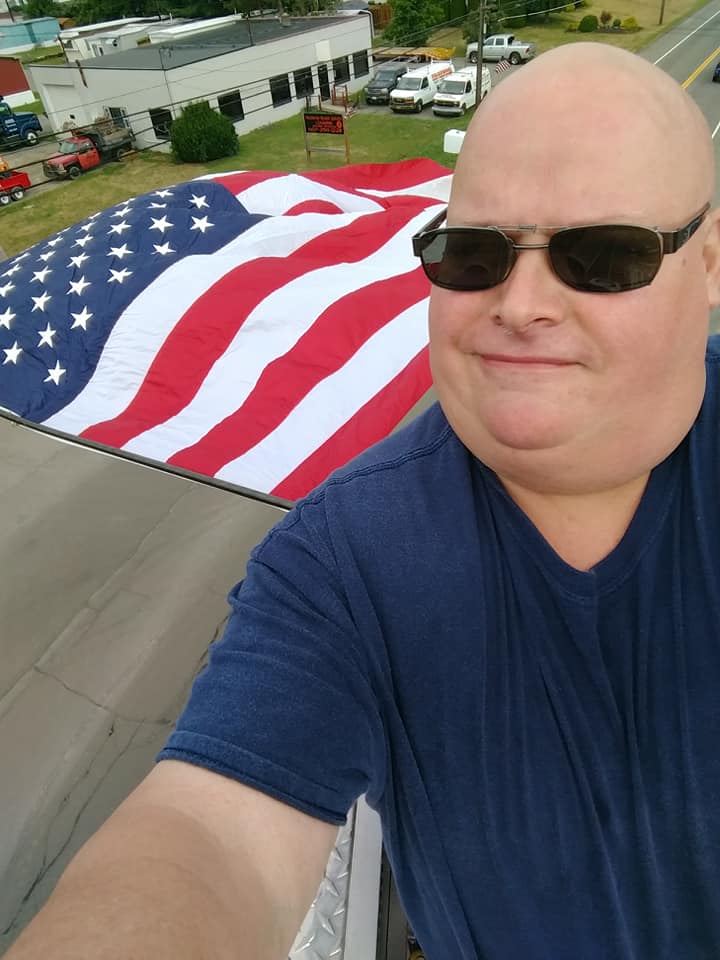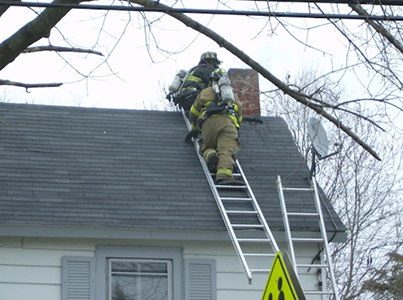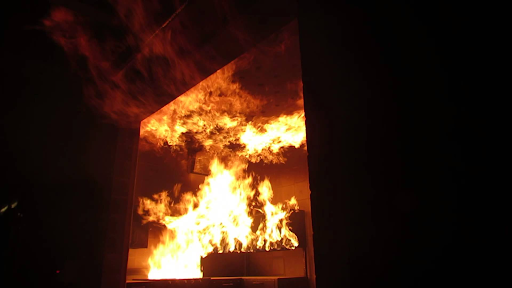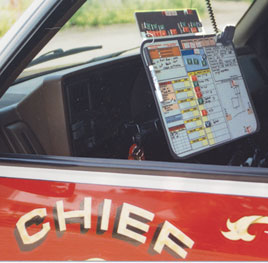Chimney Fires Blog Series
In our Chimney Fires blog series, we aim to educate and equip firefighters, emergency responders, and fire chiefs with the resources they need to train their teams to effectively and safely eliminate dangerous chimney fires.
In our Chimney Fires 101 blog, we discussed what a chimney fire is and the different types of stoves, fireplaces, and chimneys firefighters need to be knowledgeable about. With that foundation, in this blog post we will discuss the tools, procedures, and division of job duties that all come together to successfully eliminate a chimney fire.
Chimney Fire Equipment & Assignments
Because of the diversity in chimney fires, several different types of equipment are needed to assess, contain, and then eliminate chimney fires.
Equipment Used to Fight Chimney Fires Includes:
- Chimney Brush
- Tarps/ Runners
- Metal Salvage Bucket
- B/C Extinguisher
- Baggies with D/C
- Small Stove Shovel
- TI Camera
- Mirror
- Positive Pressure Fan
- Heavy Chain with Metal Cable
This equipment can be utilized by different team members, depending on their assignments and roles. Depending on the complexity and location in the building of a chimney fire, several different team assignments may be needed including:
- Incident Command
- Safety Officer
- Fire Attack Crew
- Roof/Chimney Crew
- Ventilation Crew
- Exposure Crew
Each assignment is crucial to the success of eliminating a dangerous chimney fire quickly. If one assignment is done improperly, it significantly impacts the safety of emergency responders and any people who may be trapped inside the building.
Chimney Fire Firefighter Job Duties
Each chimney fire crew has important responsibilities to complete during the firefighting process. Each crew’s assignments need to be completed in order to ensure the chimney fire is safely eliminated, the fire spread is contained as much as possible, and health risks are mitigated.
Job Duties of the Fire Attack Crew include:
- Put F/R tarps down
- Open damper
- Use DC to subdue the fire
- Remove combustibles in a metal can
- Remove the vent pipe (if needed)
- Use a DC Extinguisher up the chimney
Job Duties of the Chimney/Roof Crew include:
- Use plastic bags with DC to put out the fire
- Check the integrity of the chimney
- Check exposure to roof
- Secure two means of egress
- Wear full PPE and SCBA
Job Duties of the Ventilation Crew include:
- Create appropriate openings for the removal of dangerous materials
- Set up positive pressure fan
Job Duties of the Exposure Crew include:
- Check for an extension along the chimney area
- Check the attic/second floor for an extension
- Pull the backup handline
- Secure support ladders
- Help with ventilation efforts
Having the proper tools and division of job duties on-site allows emergency fire responders to safely put out a dangerous chimney fire efficiently. Taking the time to fully understand all the equipment necessary to eliminate a chimney fire and the breakdown of each crew assignment will ensure faster response times, increasing the safety of firefighters and preserving the building as much as possible.
In addition to his leadership role at Ward Fire Equipment,
John May has more than 30 years of experience in the Fire Service. John is a Level I & II Fire instructor in the State of NY.




